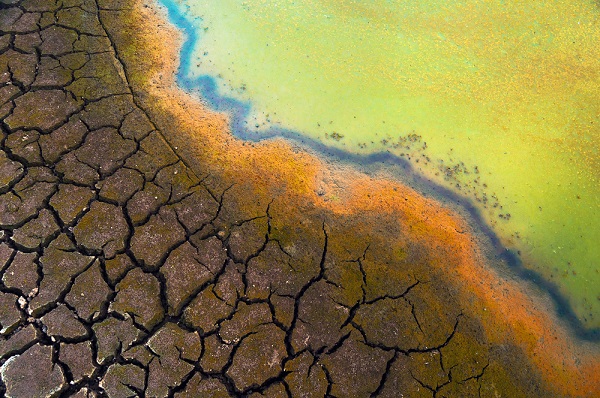4 Environmental Exposures Impacting Commercial Clients

By: AnneMarie McPherson Spears
Environmental liability insurance is the elephant in the room: the market is expanding, capacity is excellent, the risk is relevant to essentially every commercial client that comes across an agent’s desk … and yet few agents are seeing it as an opportunity.
“Our research shows that fewer than 15% of licensed agents are actively working in the space, and yet 100% of commercial insureds are impacted by environmental exposures,” says Chris Bunbury, president & CEO of Environmental Risk Managers Inc. (ERMI).
Those environmental exposures are becoming harder to ignore, with “a combination of greater awareness of human impact on the environment and increases in science that show harm at very low levels of exposure to pollutants are increasing the overall risk,” says David Dybdahl, CEO of ARMR Specialty Holdings. “At the same time, insurance companies are eliminating loss exposures to specific contaminants—and that void in coverage is filled by adaptations of the environmental insurance product line.”
All this leads to a market that is continuing to grow “20% to 30% a year,” says Daniel Drennen, environmental practice leader at Amwins.
As far as capacity is concerned, “the environmental insurance market capacity has exceeded demand for the last 20 years or more,” Dybdahl says. “If limits happen to be an issue, most carriers are willing to write excess of other carriers’ underlying policies, so building towers is a very common thing we do now,” Bunbury adds.
With great capacity and an expanding market, the biggest obstacle for independent agents is education. In the CIC designation, Dybdahl notes that the class guide skips right over the pollution exclusion, Exclusion F, in the commercial general liability policy. However, Environmental Risk Managers recently partnered with the National Alliance to create the Certified environmental Strategist (CeS) program designation to help educate agents about environmental liability.
As awareness of risks continue to prompt more stringent pollution exclusions, here are some of the biggest environmental exposures that impact commercial lines clients today:
1) Engineered chemicals. Thanks to scientific advancements, the impact of chemicals created by humans is just beginning to be measured, including per- and polyfluoroalkyl substances, known as PFAS or simply “forever chemicals,” and microplastics.
From PFAS’ presence in the blood of humans and animals around the world and its potential link to cancer, according to the Environmental Protection Agency, to microplastics in baby bottles, according to NPR, these engineered chemicals are inescapable. Other emerging risks include 6PPD, a tire preservative that when washed into rivers by rain has been found to be deadly to fish, according to the California Department of Toxic Substances Control.
“As testing gets better with technology, there’s definitely more exposure for attorneys to link specific chemicals to a specific disease,” Drennen says. “While historically you couldn’t test to a micro-level of what’s in the environment or in someone’s body, it’s gotten better—that’s going to lead to more lawsuits.”
2) Natural disasters. In 2022, the U.S. experienced 18 separate weather and climate disasters costing at least $1 billion each, with a total cost of at least $165 billion to rank third-highest in total cost behind 2017 and 2005, according to Climate.gov.
“If you have insureds located in areas with floods, hurricanes, tornadoes or earthquakes, they’re good candidates for pollution coverage because we’re seeing the amount of claims after natural disasters for environmental liabilities on the rise,” Bunbury says. “It’s something we’re really noticing as more natural disasters occur.”
3) Cyberattacks. Cyber policies have a pollution exclusion, Bunbury says, meaning that “agents should round out a cyber policy with a pollution policy,” he says. “Cyberattacks have hit waste treatment plants and caused hundreds of thousands of gallons of untreated sewage to spill into the river and neighboring properties.”
Businesses beside waste treatment facilities are not immune, either—an ERMI article points out that hackers can impact the operation of watercraft, trains, aircraft, dam operations, HVAC, plumbing and other systems that depends upon computers, and a cyber policy will exclude resulting pollution liabilities.
4) Biohazards. The exclusion of fungi and bacteria from property and liability policies has opened swathes of insureds to losses. “It affects basically all commercial buildings,” Dybdahl says. “It helps to know that water intrusion indoors accounts for 60% of all property claims, and if it takes more than three days to take care of it, mold will grow on drywall just about every time.”
“There’s absolutely no training for insurance agents on fungi and bacteria exclusions, so they’re not telling their customers about the effects of the exclusions,” he continues. “It also helps to know that the average sub-limit for mold on a commercial property is about $15,000, while the average mold cleanup job in commercial buildings is $250,000.”
AnneMarie McPherson Spears is IA news editor.










